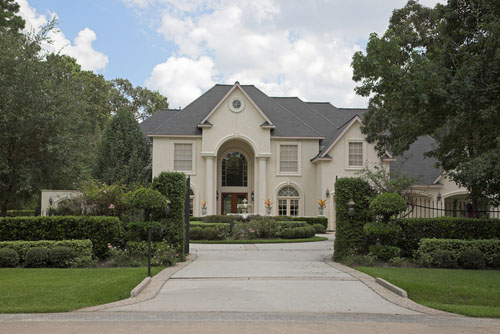High-end insurers like Chubb, Pure, AIG Private Client Group and Cincinnati Insurance increasingly use risk-management specialists to evaluate clients’ properties and, if necessary, help secure contractors to make upgrades and repairs. Technicians will install water and temperature sensors connected to mobile apps that alert homeowners of possible danger. Some insurers also have in-house art preservationists and restoration experts who can help develop an “escape plan” for fine art, valuables and collections when disaster is imminent.
“Traditionally, insurers would try to prevent loss in a passive manner—identify threats and recommend mitigation. Some offered financial incentives and hoped that would work,” says Ross Buchmueller, president and CEO of Pure Insurance. “While that’s noble and constructive, it’s not particularly effective. Very successful people who are very busy are not sufficiently expert in water mitigation or other potential hazards. And they don’t have a lot of time. Getting them to actually fulfill the recommendations is a challenge.”
In 2019, Pure helped a member with a waterfront home create a hurricane-resistant bunker for his $10 million collectible car. Pure’s risk- and collections-management teams worked with the member’s builder on design specifications for the bunker’s elevation, doors, storm shutters and drainage system. Then the team developed an action plan with detailed steps on moving and securing the antique car in a hurricane.
Chubb offers clients a mobile app that alerts them of nearby hurricane or wildfire risks, says Jennifer Naughton, risk consulting officer of Chubb Personal Risk Services. Using the app, clients can see their property in relation to peril, such as a hurricane coming up the coast, and take protective measures. If a client isn’t at home because it is their vacation property, Chubb dispatches a risk consultant after a storm to assess any damage—even if a claim hasn’t been filed. If necessary, the representative will connect the client with resources to secure windows and board up the roof, for example, to prevent further damage.
The number of specialty high-net-worth insurers has grown over the past 20 years, from just two to seven today, says Joe Clark, chief growth officer at Aon Private Risk Management, an insurance brokerage. They typically serve clients with at least a $5 million net worth and $1 million or more in liquid assets.
Proactive measures go beyond natural disasters. Chubb has a team of fine-art and collections specialists who will visit a home to assess the installation of a piece to ensure that the environment has the proper temperature, lighting, humidity and security, says Laura Doyle, the company’s art, jewelry and valuable collections manager.
Chubb, Pure and other companies will conduct infrared thermal imaging assessments at clients’ homes to detect electrical anomalies or water damage behind the wall that could lead to disastrous fires or flooding.
Water damage is the No. 1 cause of claims, but it is also very preventable, Mr. Buchmueller notes. To that end, Pure ran a pilot program in Austin, Texas, last year with HomePoint, a home-repair and maintenance company. Pure members can schedule a HomePoint technician to come and replace plastic supply lines and connectors on toilets with more-durable metal ones. If successful, the company will expand to other markets. A Pure representative says its members’ premiums average $13,400 annually.
Insurers may also work with homeowners to install sensors that monitor for water leaks, seismic activity and changes in temperature, humidity and water pressure. So, for example, if a sensor detects rising temperatures in a wine cellar, an alert is sent to the client and, if necessary, a backup contact person to ensure the wine is protected.
In Maryland, a Chubb agent worked with homeowners Kim von Paris and Richard Gray to install a water-detection system in their home after they completed a $1 million expansion and renovation project in 2019. Located in Port Republic, the house sits on a cliff overlooking the Chesapeake Bay. Natural erosion is “part of living on the bay,” says Ms. von Paris, who is retired.
When insuring her newly renovated home, Ms. von Paris says Chubb developed an action plan to minimize risks. It recommended that the couple buy a $2,000 leak-detection system from a vendor in Chubb’s network of service providers.
About a week after the couple moved back into their newly renovated home, their system indicated a leak and shut off the water. Since there was no visible water damage, the couple turned the water back on. This off-on cycle continued for a couple of days until they asked their contractor to inspect the pipes. After some investigation, the builder opened up a wall on the lower level and discovered a pinhole leak in a brass fitting. “If we hadn’t had that leak-detection system, this could have gone on for months,” says Ms. von Paris. “I said to my husband, ‘This system has paid for itself.’ ”
Ms. von Paris says the annual premium for her Chubb policy is just under $5,000, which covers the family’s roughly 3,200-square-foot home. Chubb declined to disclose its average premium price, saying that home sizes and the nature of homeowners’ valuables can vary widely.
Some personalized service insurers provide to their high-net-worth clients will one day be available to homeowners with standard policies, says Sean Kevelighan, chief executive of the Insurance Information Institute, a trade group. “You’re seeing some of the technology coming into mainstream products. What we’re seeing is an overall shift from detecting and repairing to protecting and preventing.”













